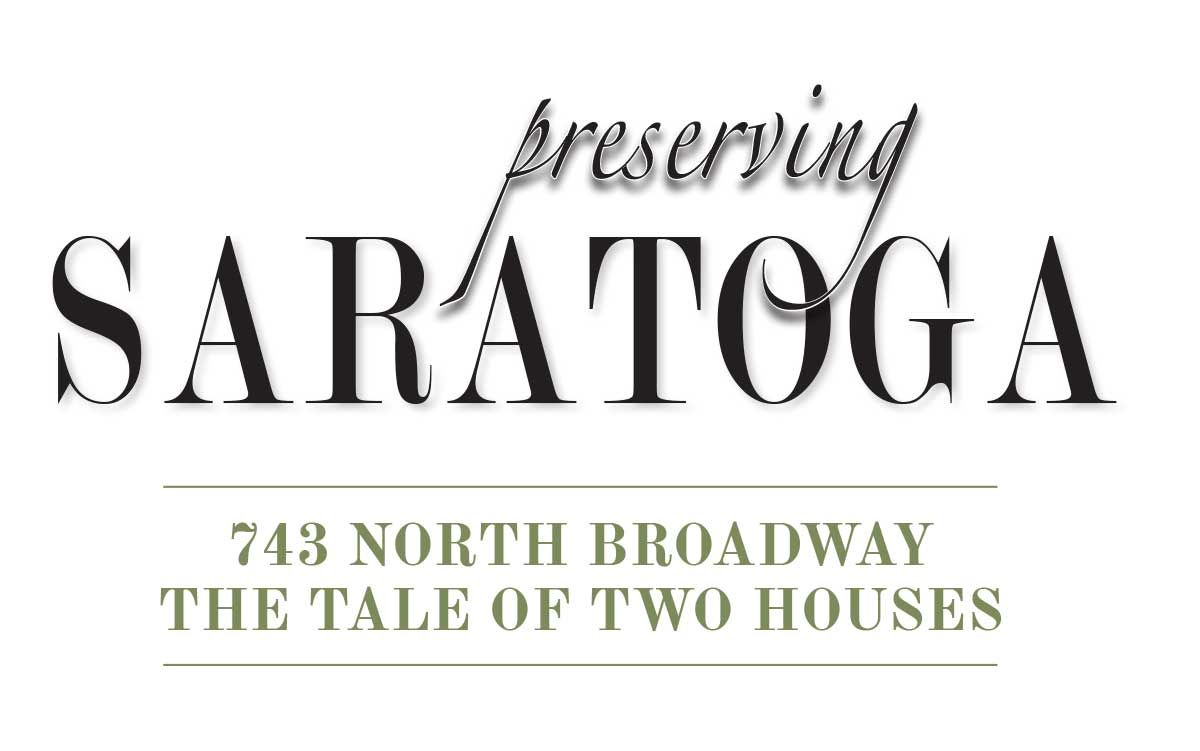
WRITTEN by Samantha Bosshart, Saratoga springs Preservation Foundation
Photos provided by Roohan Realty (Unless Noted)
[From the 2025 Home & Garden Magazine]
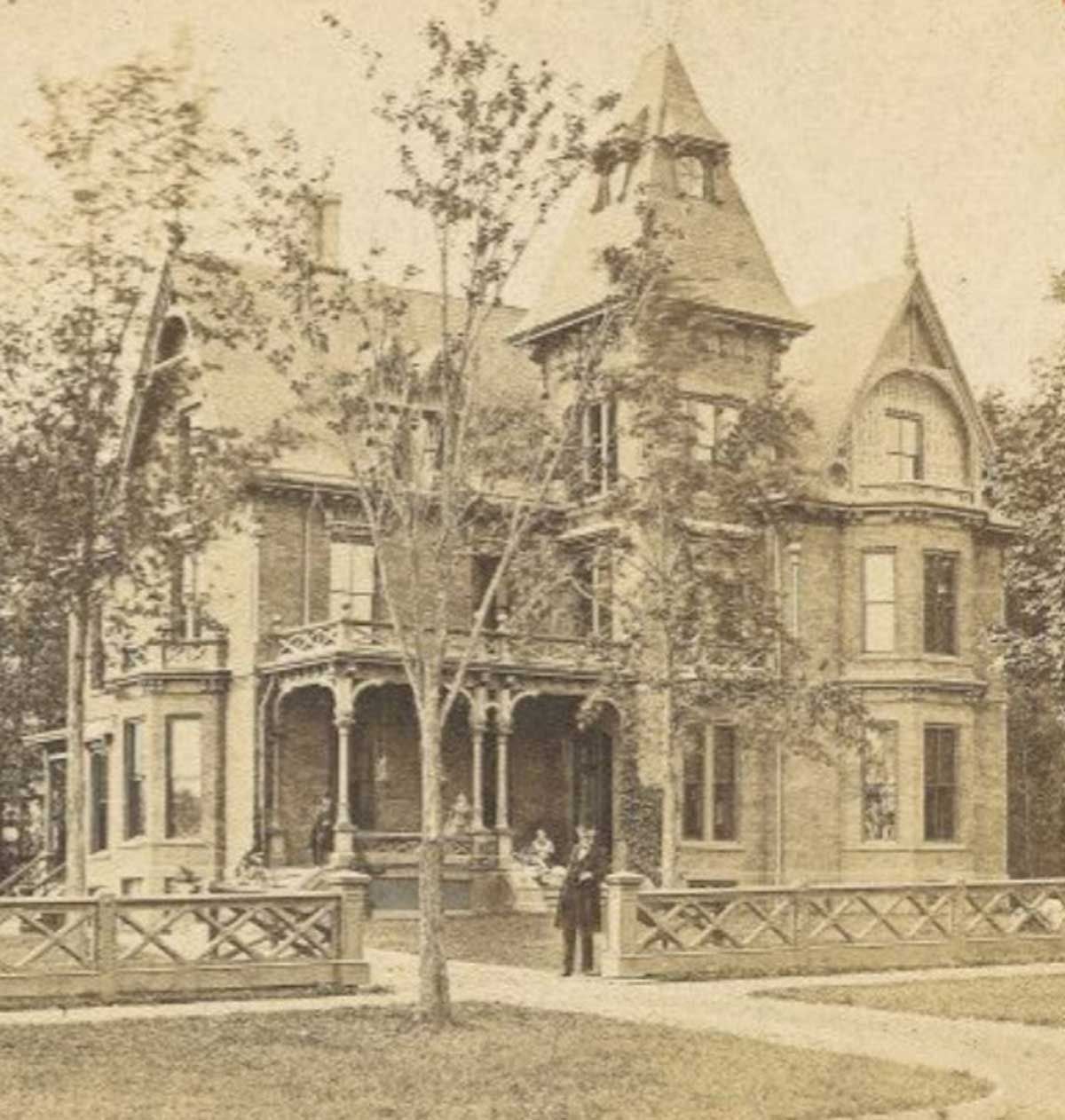
Charles S. Lester Residence,
courtesy of the Joki Collection, Saratoga Springs Public Library.
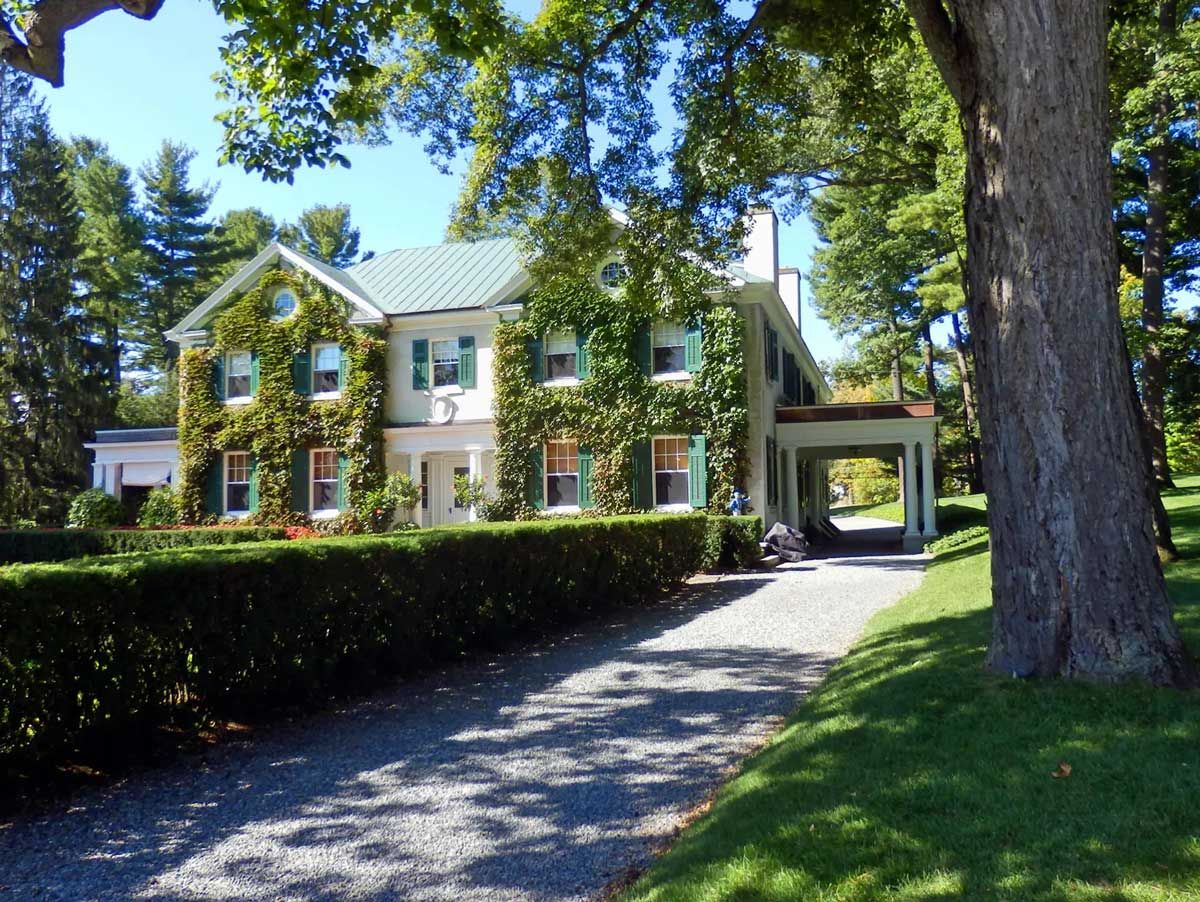
The stately Colonial Revival residence set back on a large, treed lot on North Broadway that you see today was built in 1915, replacing a landmark, the former residence of Charles S. Lester, a prominent attorney, renowned judge, and businessman.
In 1875, after acquiring several vacant lots on North Broadway, Lester built a residence at 747 North Broadway, the most northerly building on North Broadway at the time of construction. The large Stick style brick 22-room house was known as Adirondack Villa. The Stick style, popular between 1860 and 1890, is a transitional style that links the preceding Gothic Revival with the subsequent Queen Anne style. Typical of the style, the house had a steeply pitched roof with exposed eaves, front-facing gable, decorative horseshoe wood trusses at the apex of the gables, a tower, and a porch with cross patterned balustrades. It was here that he and his wife Lucy “entertained their friends with gracious hospitality for many years” according to the Saratogian. When the Lesters constructed a new house at 694 North Broadway, they sold the property to Eliza B. Downing, the wife of Augustus C. Downing, in 1886.
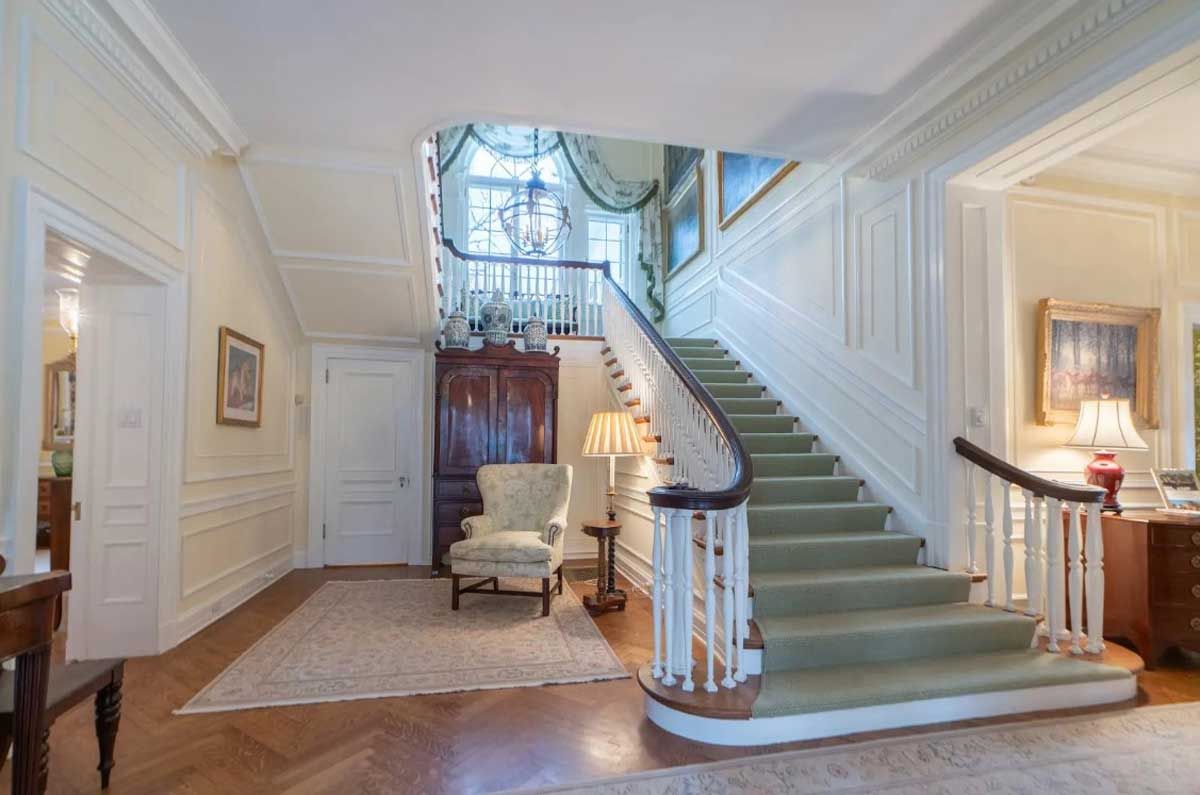
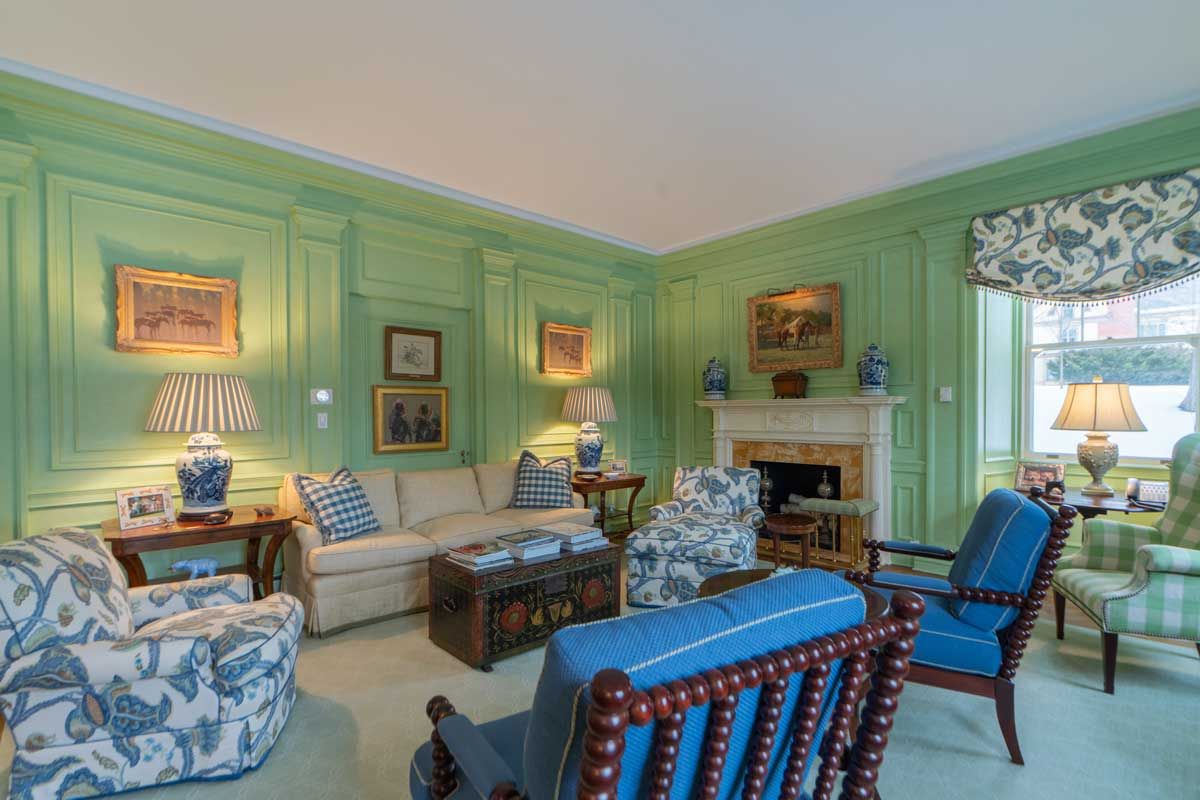
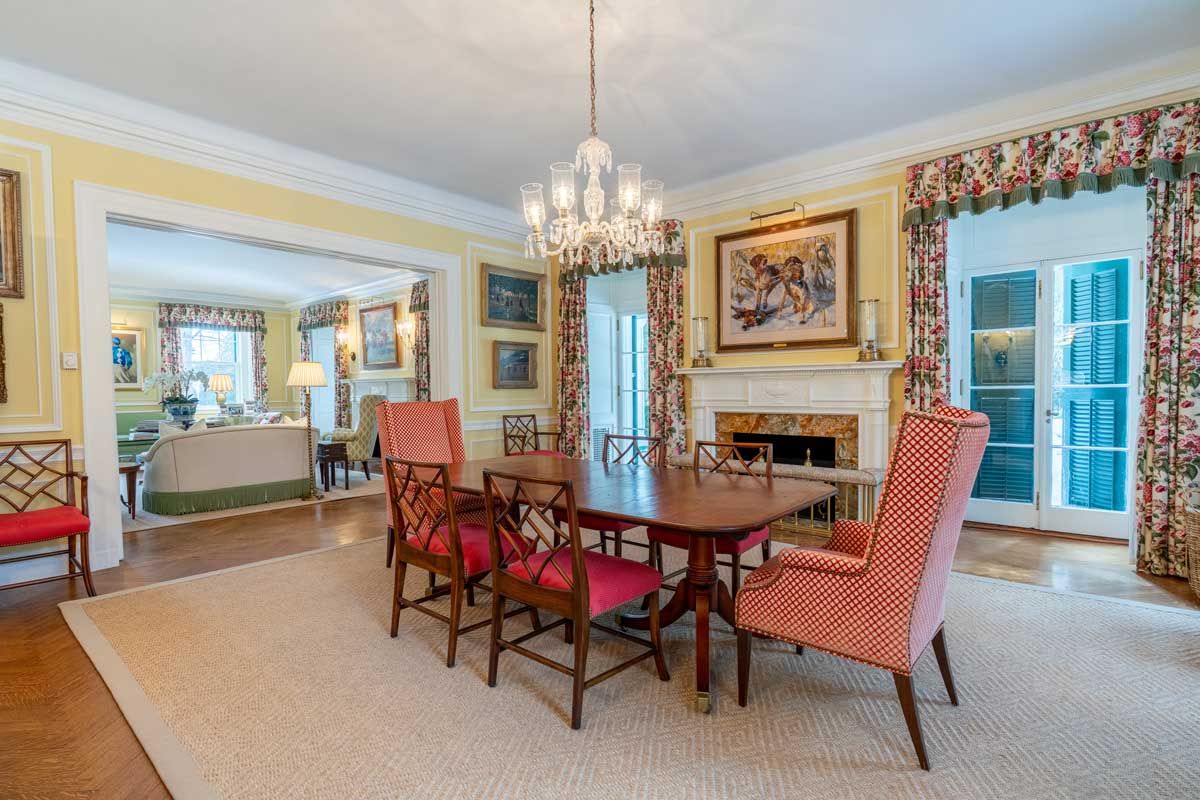
The Downings were a prominent New York family that summered in Saratoga Springs. Six months after acquiring the property Eliza and Augustus C. Downing Sr. conveyed the property to their son, Augustus Jr. He and his wife, Flora, renamed the residence Cornwall Manor, for Augustus’ middle name. The New York Evening Telegram reported on July 27, 1887, that “Mr. Downing has added a spacious ballroom and made many improvements.” The New York Herald reported the Downings “entertain handsomely and give select dancing parties in their large ballroom.”
On February 28, 1897, the New York Herald listed Cornwall Manor for sale or rent. It was described as
a large modern brick House, with ‘port cochere,’ piazzas on three sides: on first floor, large hall, billiard, reception and ball rooms, parlor, dining room with large butler’s pantry, kitchen and servants’ offices: second floor eight bedrooms, dressing rooms, and baths: third floor, four bedrooms and bathrooms, and three servants’ rooms: plenty of closet room on all floors: house is fully furnished: large coach house, harness room, stalls for five horses, two rooms in loft.
It appears that Edward O. Bartlett, Jr. rented the property and opened “The Manor School for Girls” in 1899. The school was short lived, as by 1901 Bartlett had removed to New Haven, Connecticut and the house was listed as vacant. It appears that the house remained vacant, and its condition deteriorated.
Susan Griffith, who hailed from New York City and summered in Saratoga Springs, was considering building a residence in Saratoga Springs. On October 28, 1913, Lewis M. Jones wrote Miss Griffith about a suitable lot to build, suggesting the Cornwall Manor property. “The lot, a magnificent corner, is 250 feet front by 300 feet deep to the next street it would make beautiful grounds for a stately home it is well defined by nature, there being many grand and lordly trees upon it.” The asking price was $75,000, but Susan and her sister Margarette acquired it for $40,000 on January 30, 1914.
On February 12, 1914, the Saratogian announced,
The Misses Margaret(sic) E. and Susan D. Griffith are to become property owners. The Misses Griffith have purchased the property known as “Cornwall Manor” on North Broadway and will occupy it this summer… The Misses Griffith have occupied the residence of the late James Lee Scott on Union Avenue for several summers. They are fond of Saratoga and some time ago gave $30,000 to the Bethesda Church for its music fund.
Immediately following the summer season, the Saratogian reported on September 9, 1914, that E. C. Eaton Wrecking Co. began wrecking Cornwall Manor. A follow up article titled “Saratoga Springs Loses One of Old Landmarks,” announced that a “new handsome modern residence” will be erected on the property.
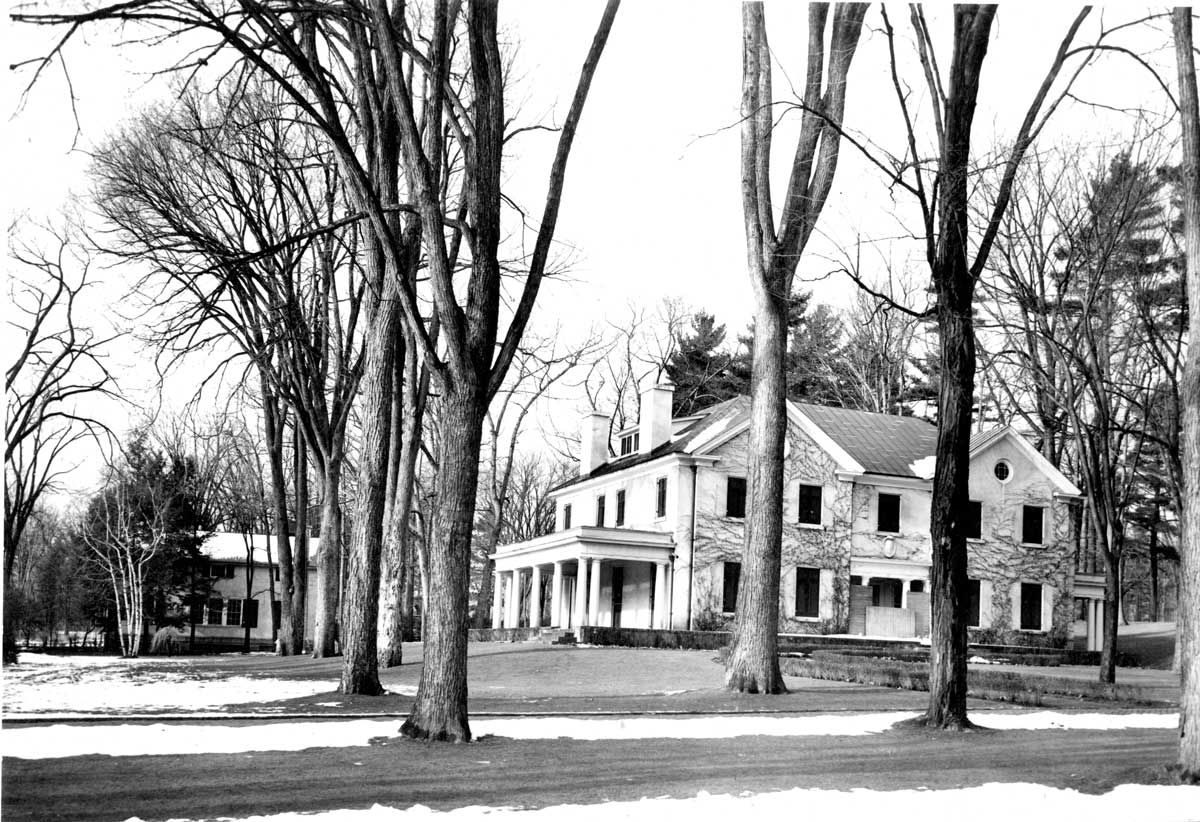
The unmarried sisters appear to have hired prominent local architect R. Newton Brezee to design their new residence. Typical of the Colonial Revival style, it has a symmetrical facade with a center door with sidelights, an entry porch with columns, and six-over-one double hung windows. The house is unique because it is clad with stucco.
In 1918, Margarette Griffith began a series of large gifts to Skidmore College. The gifts of Margarette were of “such critical importance” to the college at the time that the trustees voted to name the building that housed the scientific laboratories “Margarette E. Griffith Hall.” The Saratogian dated September 17, 1929, reported that “she herself greeted the specific use of her name in this way and expressed the strong wish that it should bear simply her family name and it be called Griffith Hall.”
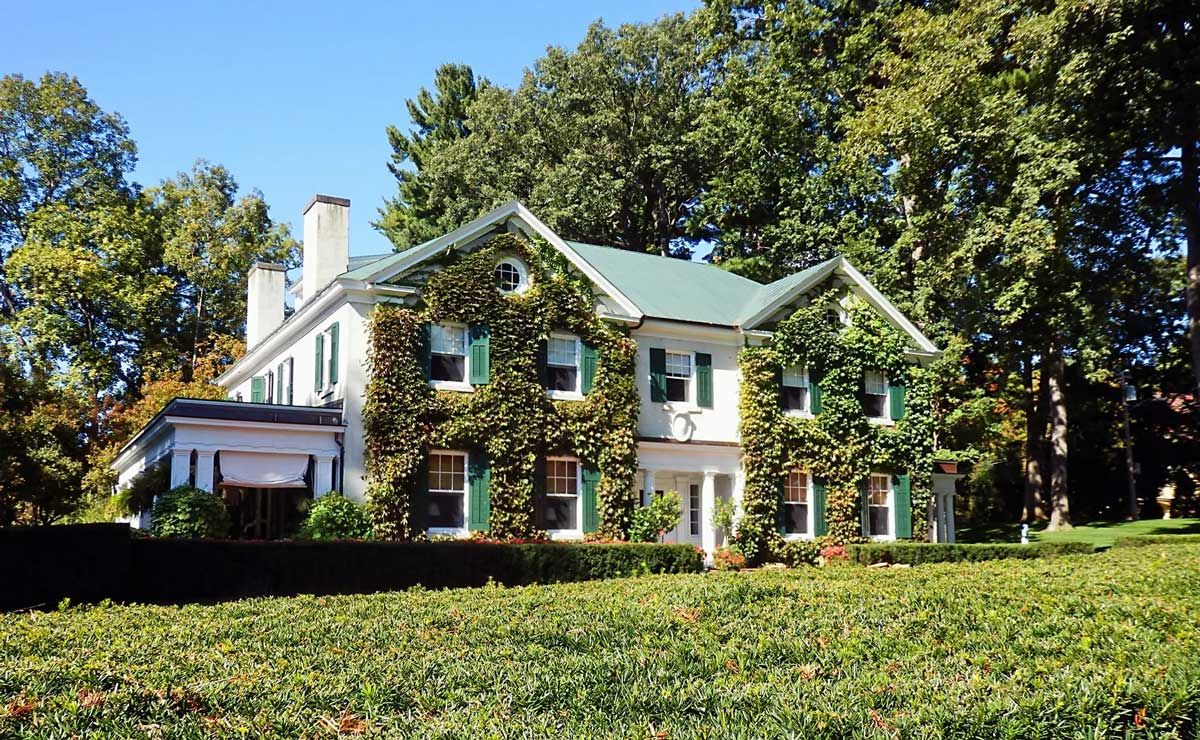
743 North Broadway past and present.
Top photo: Circa 1938, courtesy of the George S. Bolster Collection, Saratoga Springs History Museum

Griffith Hall, Skidmore College, 62 Circular Street, Photo courtesy of Skidmore College
Following Margarette’s passing in 1925, Susan continued to make generous gifts to the college, making contributions to the endowment, organ, and other funds to provide for the enlargement and remodeling of Griffith Hall in 1929. Upon completion of the enlargement and remodel of the scientific labs, trustees voted to carry out Margarette’s original wish and included all of the college’s scientific laboratories under the name Griffith Hall. The college president at the time, Henry T. Moore, characterized Susan’s service “a personal record of generosity to Skidmore which is second only to Mrs. Scribner herself” – an impressive statement considering Mrs. Scribner was the founder of the college.
Susan passed away in 1938 and bequeathed her residence at 743 North Broadway to the Presbyterian Hospital of New York. In 1942, it was sold to James Beverley, president of the Ballston-Stillwater Knitting Company and his wife Caroline. In 1950, the property was advertised for public auction. It was described as “one of the finest homes in Saratoga Springs, 15 rooms, year around, excellent condition,” and advertised as three building lots, approximately 100’ x 150’. The starting bids were $2,000,000 and $1,000,000. Ultimately, the property was not subdivided.
Robert B. and Sally Harvey acquired the property on August 10, 1950, and two weeks later sold it to Arthur Kerney, who later became mayor of Saratoga Springs, and his wife Phyllis. In 1957, Christopher T. Chenery purchased 743 North Broadway to be his summer residence. That same year, he bought an additional property, increasing the frontage of North Broadway to 400’.
Chenery, born in Richmond, Virginia, founded and served as president of the Federal Water Service Corporation which was superseded by Southern Natural Gas Company. He also invested in offshore drilling in the Gulf of Mexico. However, his true passion was horses, and he established the famed Meadow Stud, credited with breeding 43 stakes winners. Chenery was one of three men appointed by The Jockey Club in the early 1950s to restructure New York racing, establishing what became the New York Racing Association. In 1960, he transferred 743 North Broadway to Meadow Stud.
In 1968, Chenery became ill, and his daughter, Penny Chenery, took charge of Meadow Stud. Penny is best known for her role in breeding and racing Secretariat. In 1972, Secretariat won Horse of the Year. In January 1973, her father passed away. That year, Secretariat went on to win the Triple Crown, the first horse to do so in 25 years. Secretariat set and still holds the fastest time record in all three races. His most famous loss was Onion that year at Saratoga Race Course. Secretariat is still widely regarded as one of the greatest racehorses of all time.
In 1975, 743 North Broadway was sold to Wade Mack, a one-time registrar and Dean of Faculty of Skidmore College, and his wife Patrice. The following year, John Behrmann, a dentist, and his wife Linda purchased it. In 1980, William S. Farish III acquired the property for a summer residence. William is a former ambassador to the United Kingdom and thoroughbred breeder, owner, and founder of Lanes End Farm, which has sold more than 350 stakes winners.
Continuing the horse racing tradition, Ann and William Pape purchased 743 North Broadway in 2010. William has been involved in steeplechase racing for more than 50 years. He is one of the leading owners and has served as president of the National Steeplechase Association. The Papes have taken great care and made significant investment to preserve the house. After owning the property for 15 years, it is now on the market. The Foundation hopes that the new owner will continue to be a good steward for generations to come.